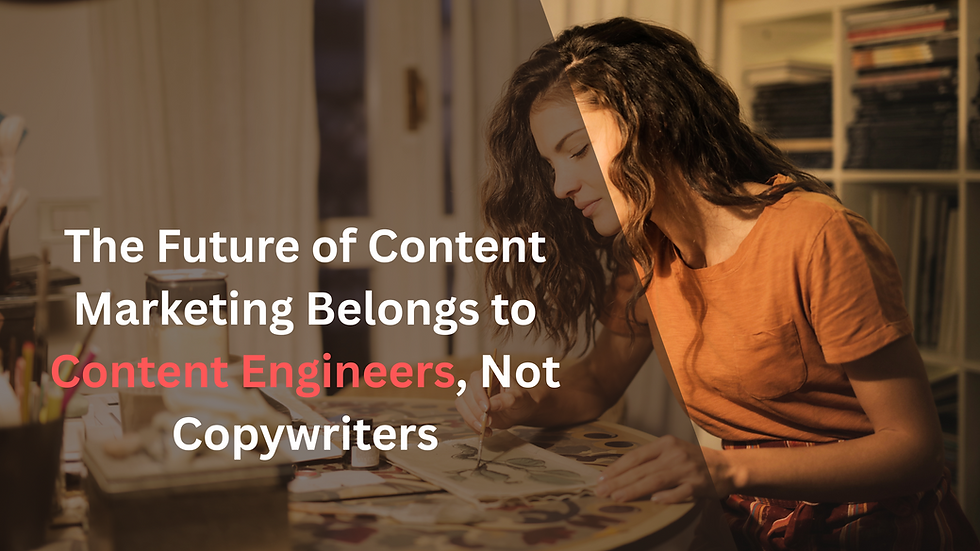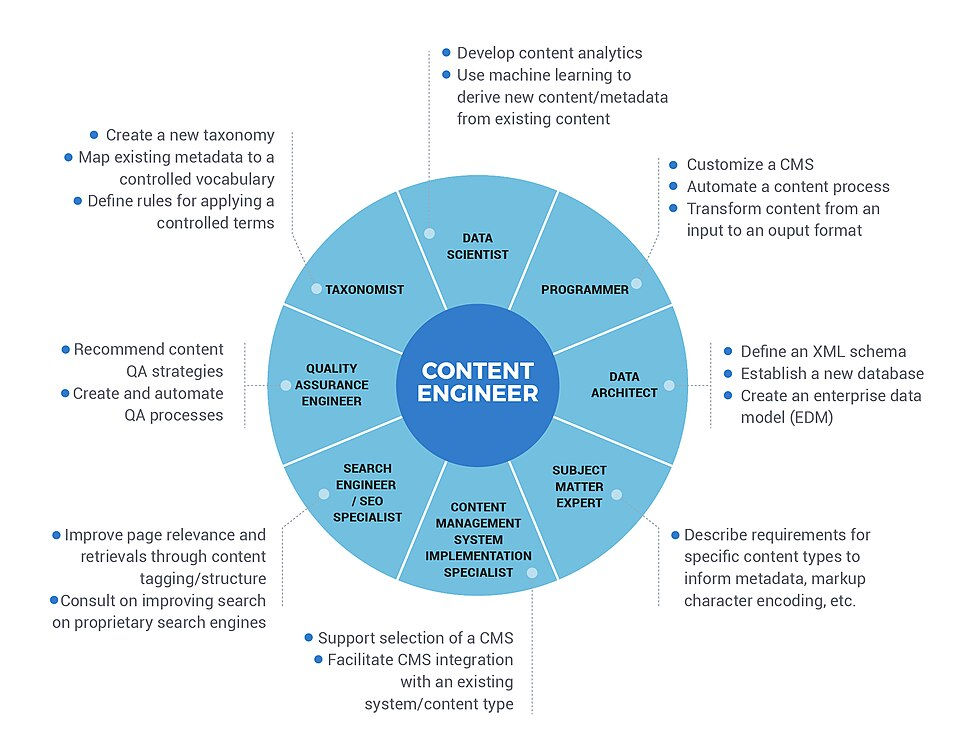The Future of Content Marketing Belongs to Content Engineers, Not Copywriters
- Angie
- Aug 7
- 4 min read

In the new era of AI, the fundamental question for marketers is no longer "Can you write good content?" but "Can you design a content system that scales with intelligence?" While many businesses in New Zealand and Australia are still primarily focused on using generative AI for ad-hoc tasks like writing SEO blogs or social media posts, leading companies globally have moved on to a more sophisticated model: content engineering.
This isn’t about replacing writers with machines; it's about building a systematic, modular, and automated framework for content. A content engineering approach transforms content from individual assets into a cohesive, compounding system, designed to deliver repeatable and measurable results.
What is a Content Engineer?

A content engineer is the architect of this system, acting as a bridge between content strategy and technology. Their role transcends traditional writing and SEO, focusing on the infrastructure that makes content scalable and intelligent. Key functions include:
Modular Content Design: Breaking down content into reusable, structured blocks. Instead of writing a blog post from scratch, a content engineer might assemble it from a pre-built "problem" module, a "solution" module, and a "customer testimonial" block.
Workflow Automation: Designing and implementing workflows that automate content creation, repurposing, and distribution. This might involve using a headless CMS and tools to automatically generate multiple formats (e.g., a blog post summary, a video script, and a LinkedIn carousel) from a single source.
Semantic SEO and Internal Linking: Utilising advanced tools like SurferSEO or MarketMuse to ensure content provides comprehensive coverage of a topic, not just a single keyword. This involves designing an internal linking structure that reinforces topic authority and improves user navigation.
Performance Analytics and Feedback Loops: Integrating content with analytics platforms to measure the performance of each content module. This data-driven approach allows for continuous optimisation, where underperforming blocks can be replaced and high-performing ones can be reused.
Why the Manual Model Fails at Scale: The Data
The traditional, manual approach to content has a fundamental scalability problem. A recent report from the Content Marketing Institute highlighted that 65% of marketers struggle with a lack of a clear strategy for measuring content ROI. The manual, one-off production model is a primary culprit.
Inefficient Production: A study by Semrush found that businesses publishing more than 16 blog posts per month typically generate 3.5x more traffic than those publishing less. However, manually producing content at this volume is prohibitively expensive and time-consuming. Content engineering solves this by enabling higher output with the same or fewer resources.
The "Keyword Stuffing" Trap: Many NZ and AU brands are still focused on ranking for individual keywords. According to ahrefs, a significant portion of top-ranking pages don’t just target one keyword; they rank for hundreds. This is because modern search engines reward topical authority — a concept that content engineering is built around. A single, well-engineered content hub on a topic like "eco-friendly living" will consistently outperform dozens of individual, one-off articles.
Case Study: A Content Engineering Model for an Australian Eco-Tech Brand
Let's imagine a fictional Australian company, "Eco-Solutions," that sells smart home devices for reducing energy consumption.
Old Approach (Manual): The marketing team writes a new blog post each week on a random topic like "10 ways to save power." They manually add a few links, but there's no system. The content lives in a silo and doesn't connect to a broader strategy.
Content Engineering Approach (Systemised):
Build a Content Ontology: The team defines a hierarchical content structure. The main pillar is "Home Energy Management," which branches into sub-pillars like "Smart Devices," "Renewable Energy," and "Energy Saving Tips." Each sub-pillar has specific, targetable topics.
Create Reusable Modules: The team builds a library of content components:
Introduction Module: A block explaining the importance of saving energy, reusable for blogs, videos, and social media.
Problem/Solution Module: A block detailing common energy wastage issues and how a smart device solves them.
Data & Statistics Module: A block of key stats on Australian household energy consumption, updated quarterly.
Call-to-Action (CTA) Module: A dynamic block that can be swapped out based on the user's stage in the funnel (e.g., "Learn More," "Get a Quote," "Buy Now").
Automate Content Assembly: Using a headless CMS, the team can "assemble" a new blog post in minutes by selecting and ordering these modules. An AI tool automatically suggests relevant internal links to other content within the "Home Energy Management" pillar.
Measure and Optimise: Using analytics (e.g., GA4), the team tracks which modules drive the most conversions. They discover that the "Problem/Solution" module with specific data points has a 12% higher click-through rate to product pages. They then prioritise using this high-performing module in future content.
The result is a flywheel effect: new content pieces are created faster and more efficiently, they all reinforce the brand's topical authority, and the system continuously learns and optimises based on real-world data.
The NZ/AU Opportunity: Shifting from Writers to Architects
The gap in our region is clear. We're still hiring for a task-based content world ("we need a blog writer"), rather than a systems-based content world ("we need a content engineer to build our content machine").
To stay competitive, NZ and AU businesses need to start thinking differently. This means:
Hiring Strategically: Prioritising roles that combine marketing acumen with technical skills.
Investing in Infrastructure: Moving beyond manual processes and adopting modern CMS and AI tools that support modular content.
Building for Longevity: Creating content that isn't just a one-off asset but a foundational piece of a larger, interconnected system.



